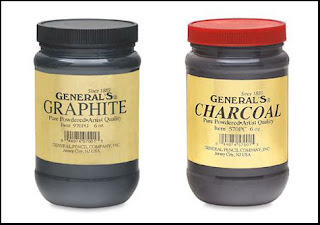Crayon is defined in a dictionary as:
cray·on n. 1. A stick of colored wax, charcoal, or chalk, used for
drawing.
Wax crayon:
In the U.S.A. the wax crayon is commonly known from our childhood drawing experiences in school - mine at least. Crayola is so common that it is the crayon that comes to mind first. I still remember a holiday gift of a treasured box of 48 Crayola crayons from my childhood.
The brand that I use is Caran d'Ache, Neocolor I. Neocolor I is the water resistant wax. Click on the this LINK for their home page. See the PDFs for their brochure and another PDF on colors. They are made in Switzerland and their performance matches their reputation. There is also a Neocolor II which is water soluble. I have not tried it.
And yes, I let my grand-children use them in the studio when they come for a visit.
Wax crayon:
In the U.S.A. the wax crayon is commonly known from our childhood drawing experiences in school - mine at least. Crayola is so common that it is the crayon that comes to mind first. I still remember a holiday gift of a treasured box of 48 Crayola crayons from my childhood.
 |
| Ballerina in Caran d'Ache wax crayons |
The brand that I use is Caran d'Ache, Neocolor I. Neocolor I is the water resistant wax. Click on the this LINK for their home page. See the PDFs for their brochure and another PDF on colors. They are made in Switzerland and their performance matches their reputation. There is also a Neocolor II which is water soluble. I have not tried it.
And yes, I let my grand-children use them in the studio when they come for a visit.
 |
| Figure drawing using Caran d'Ache crayon on Canson Mi-Teintes. |














